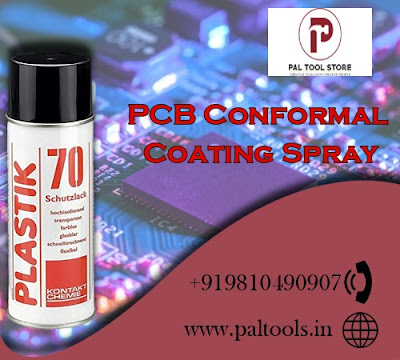Guardians of Electronics: Unveiling the Power of PCB Conformal Coating Spray
In the ever-evolving landscape of electronics, the need to protect printed circuit boards (PCBs) from environmental stressors is paramount. Whether it's moisture, dust, chemicals, or extreme temperatures, these factors can jeopardize the performance and longevity of electronic components. One effective solution to fortify PCBs against these challenges is the application of PCB Conformal Coating Spray supplier.
Understanding Conformal Coating
Conformal coatings are thin protective layers applied to
PCBs to shield them from a range of environmental threats. These coatings come
in various formulations, including acrylics, urethanes, silicones, and epoxies,
each offering unique properties to suit diverse applications.
Why Conformal Coating?
1. Moisture
Resistance:
Conformal coatings act as a barrier against moisture,
preventing it from seeping into the PCB and causing corrosion. This is
especially crucial in applications where exposure to humidity is common.
2. Dust and
Contaminant Protection:
The spray forms a protective shield, safeguarding the
delicate electronic components from dust, dirt, and other contaminants. This is
particularly beneficial in environments with high levels of airborne particles.
3. Chemical Defence:
PCBs in industrial settings often encounter a variety of
chemicals. Conformal coatings provide a chemical-resistant layer that shields
the components, preventing degradation and malfunction.
4. Temperature
Extremes:
Electronic devices can experience temperature fluctuations.
Conformal coatings offer thermal protection, ensuring that the PCB operates
reliably even in extreme temperature conditions.
Application Process
1. Preparation:
Before applying the PCB
conformal coating spray, ensure that the PCB is clean and free of
contaminants. Mask off areas that should not be coated, such as connectors or
sensitive components.
2. Material
Selection:
Choose the right conformal coating material based on the
specific requirements of your application. Consider factors such as
flexibility, ease of rework, and compatibility with other materials.
3. Ventilation and
Safety:
Work in a well-ventilated area, or use appropriate
ventilation equipment, as the fumes from the spray can be harmful. Wear protective
gear, including gloves and safety goggles.
4. Application
Technique:
Hold the spray can at a consistent distance from the PCB and
apply a thin, even coat. Ensure uniform coverage across the entire board.
5. Drying and
Inspection:
Allow the conformal coating to dry thoroughly according to
the manufacturer's recommendations. After drying, inspect the PCB for defects
and ensure complete coverage.
Additional Considerations
Temperature and
Humidity:
Consider the environmental conditions during application, as
they can impact the coating's curing time and performance.
Curing Processes:
Some coatings may require additional curing steps, such as
exposure to UV light or heat. Follow the manufacturer's guidelines for the
specific coating used.
Re-Work and Repair:
Familiarize yourself with the removal and re-application
procedures for the chosen conformal coating, especially if rework or repair
becomes necessary.
Conclusion
In the realm of electronics, reliability is non-negotiable. PCBconformal coating spray supplier emerges as a frontline defence, fortifying
electronic components against the challenges posed by the environment. By
understanding the application process and considering key factors, engineers
and hobbyists alike can enhance the durability and performance of their
electronic creations, ensuring they stand the test of time.
reference url: https://blogsubmissionsite.com/blog/details/guardians-of-electronics-unveiling-the-power-of-pcb-conformal-coating-spray


.jpg)

Comments
Post a Comment